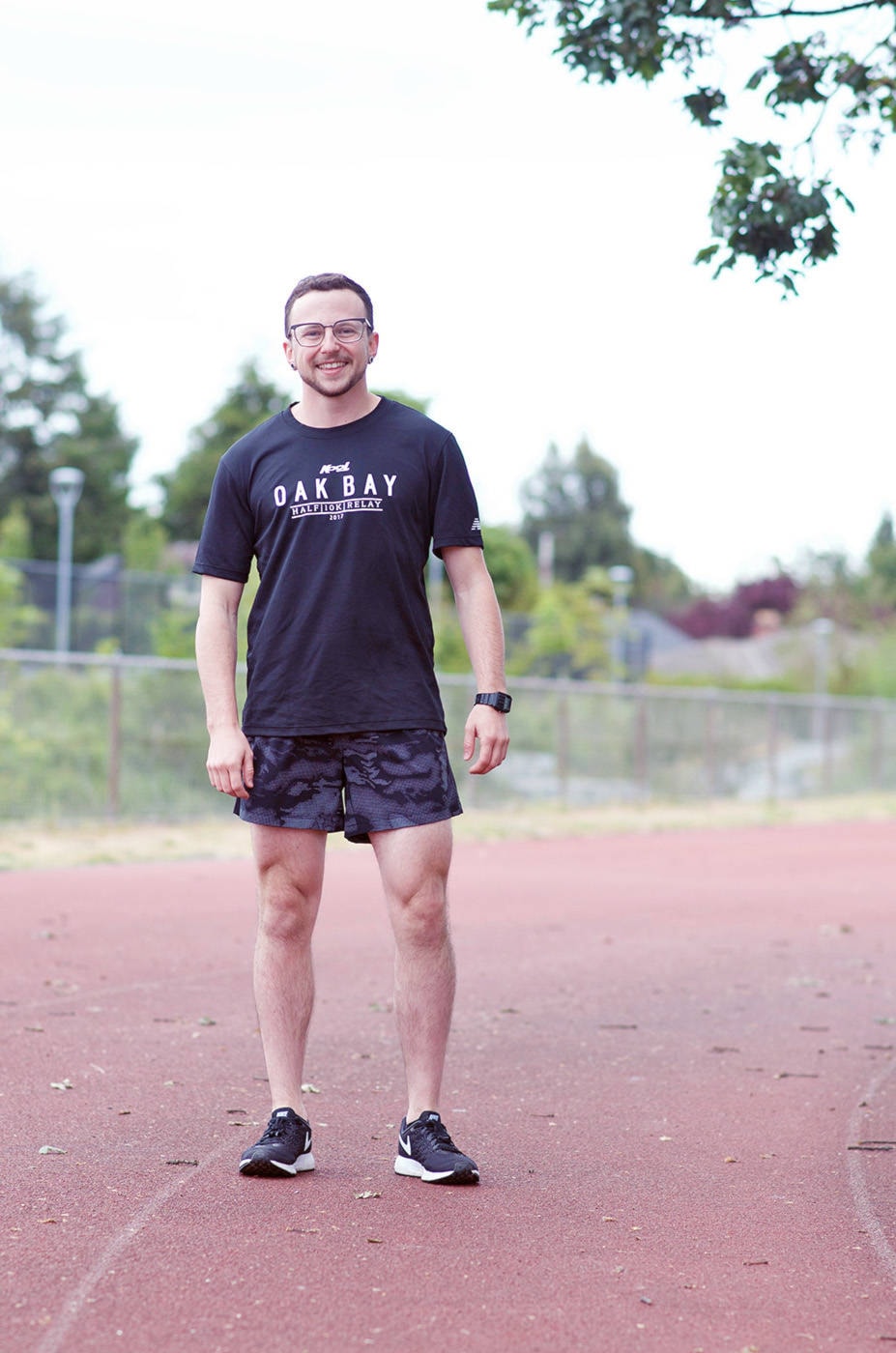Kingsley Strudwick ran in Oak Bay’s half-marathon May 28 alongside 1500 other race participants and 150 youth in the Kids Run. A transgender Oak Bay resident, Strudwick has recently been reigniting his connection to sport.
“Growing up, I was really active and involved in a lot of organized team sports, primarily soccer, hockey and basketball, then kind of fell away from that in my twenties when my own journey around gender became apparent to me.” Strudwick said in regard to the half marathon, “It’s been nice to rediscover that as a piece of my life.”
Oak Bay Half Marathon participants looped Beach Drive to Willows Beach and finished at their starting point, Windsor Park. Strudwick said he was impressed by the variety of runners there, and enjoyed a challenging but fun race. Before joining the half marathon, Strudwick contacted the organizers to find out more about their protocols for transgender inclusivity.
“They’re in the process of adapting to this, but their response was really positive. They said there aren’t any gender-specific awards given at the race (just medals for completion), and that they’re always open to suggestions to improve the event and be as inclusive as possible. That’s a perfect response and opens the door for future dialogue.”
Strudwick said, “I think this conversation around gender is particularly relevant when we’re talking about participation for children and youth. Many kids are at the same level regardless of gender anyway. We need to acknowledge that at that point it’s more about participation and feeling like you’re a part of something.”
Strudwick encourages organizations such as schools and community sports teams to study the patterns of drop-outs and those who do not participate. “Really look at why it is that people are stepping away from sport. Sometimes it has to do with gender pressures, whether that’s around being a trans or non-binary kid and not feeling like you’re welcome on ‘either team.’” Strudwick added, “Even if you’re a cisgender person, [someone who identifies with the gender of their birth sex], there are still a lot of pressures around gender that operate in the world of sport. Some women drop out because they don’t want to be seen as ‘too masculine’ for participating in sport. Certain men will drop out of other activities if they are typically associated with being ‘women’s sports.’”
Strudwick says these pressures around gender conformity in athletics simply shouldn’t exist. “Focus on building team skills and on keeping things fun, respectful and inclusive.”
Controversy follows transgender athletes to the competitive level, though Strudwick says this too is unnecessary. “Some people are concerned with transgender people competing in the gender category that matches their identity. But studies have shown that sexual traits like chromosomes and hormone levels have a very low correlation to athletic success relative to other social factors like having access to high-level coaches, mentors, training facilities and where one is geographically located in relation to these supports.”
Strudwick emphasizes that the most important step organizations can take is to try to make change. “Bring conversations about gender diversity to the table and see how it goes. It might not be perfect, but we know the current system is letting a lot of people fall through the cracks.”
Gender inclusive guidelines and recommendations for provincial, municipal and self-organized sport organizations are available through the Canadian Centre for Ethics in Sport. For all local organizations related or unrelated to athletics, Strudwick offers gender inclusivity training. Launched last year, Strudwick’s consultancy can be found online at ambitgenderdiversity.com.
editor@oakbaynews.com
